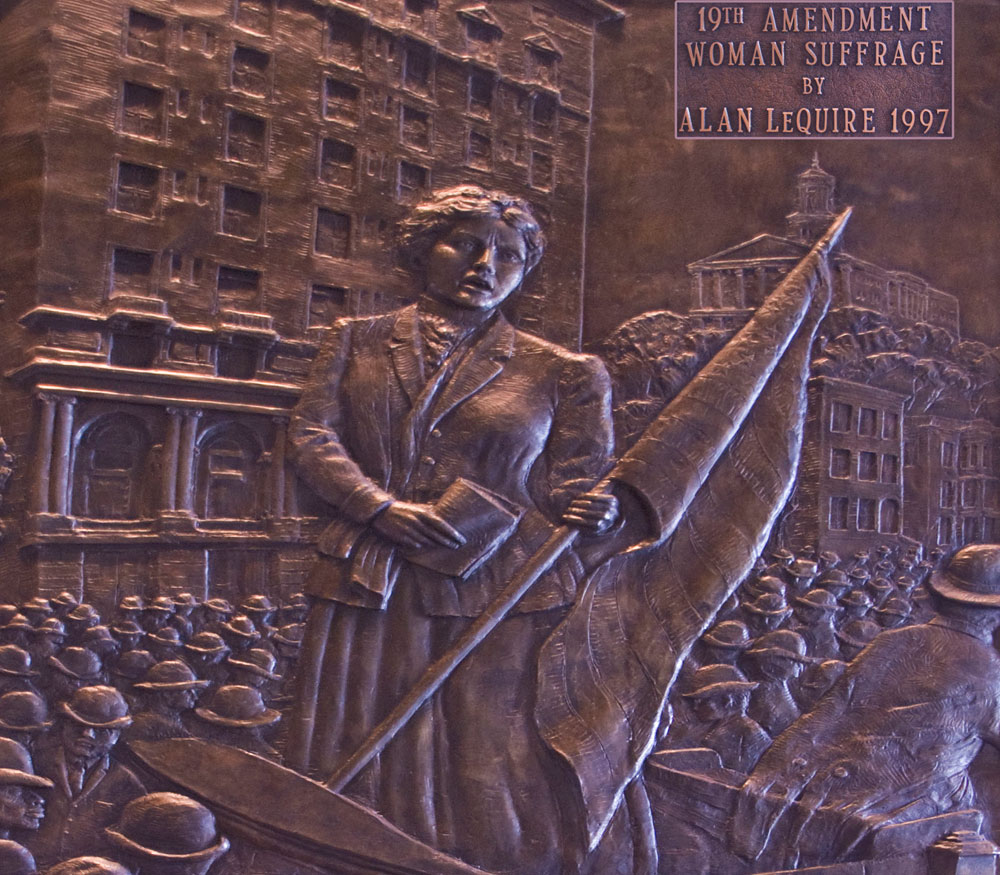
January 27, 2020; Washington Post
A new nonprofit news site, covering the intersection of women, policy, and politics, is launching today. The brainchild of Emily Ramshaw, former editor-in-chief of the nonprofit Texas Tribune, the new venture is called The 19th, after the Constitutional amendment that mandated that women be allowed to vote.
Of course, as Sarah Ellison notes in the Washington Post, in practice, the amendment was limited to granting “white women the right to vote” until the Voting Rights Act passed in 1965. The new publication, which intends to cover issues inclusive of all women, includes an asterisk in its logo to acknowledge that fact.
Ramshaw recruited Amanda Zamora, the Tribune’s chief audience officer, who previously worked at the nonprofit investigative news organization ProPublica, to serve as publisher. They raised $5 million from individual donors and foundations, including $500,000 from Craigslist founder Craig Newmark and $1 million from Kathryn Murdoch—climate change activist, philanthropist, and Rupert Murdoch’s daughter-in-law. Other major donors, all of whom are listed on the website to maintain full transparency, include the Rockefeller Philanthropy Advisors’ Reproductive Health and Women’s Rights Collective, Ford Foundation, Knight Foundation, and Abigail Disney.
In describing its goals, The 19th talks about “empowering women,” but assiduously avoids the “f” word: “feminist.” On the website, which will not be fully operational until summer, the leadership explains, “Our goal is to empower women—particularly those historically underserved by American media—with the information, community and resources they need to be equal participants in our society.”
The 19th aims to level the playing field with:
Sign up for our free newsletters
Subscribe to NPQ's newsletters to have our top stories delivered directly to your inbox.
By signing up, you agree to our privacy policy and terms of use, and to receive messages from NPQ and our partners.
- “Free-to-consume and free-to-republish journalism that reimagines politics and policy coverage through a gender lens”
- “Deep-dive, evidence-based reporting that exposes gender inequity and injustice, and reveals surprising and original stories on the issues that most deeply affect women’s lives, from health care to the economy”
- “A digital platform for civil conversations and community building, and national events that bring our readers into direct contact with their elected officials”
- “A newsroom that reflects the racial and socioeconomic diversity of American women and is devoted to covering all women with empathy.”
Women, especially women of color, are underrepresented in newsrooms, limiting the coverage and analysis that dominates print, broadcast, and digital media. A 2017 report from Women’s Media Center noted that digital media, in particular, is dominated by white men, who have the capital to launch such ventures. Once the founders start an organization, it’s tough to change, explains Nikole Hannah-Jones, racial injustice reporter at the New York Times Magazine. “People hire people who like them, who have a similar pedigree, and who tend to be in their networks.”
The 19th has made a commitment to building a diverse organization and newsroom. The goal of the site, says Ramshaw in the Washington Post, is to “elevate the voices of women who are underrepresented in American media, be it women of color, women living off the coasts, and poor women.”
“The 19th amendment did not grant all women equal access to the voting booths immediately,” explained Zamora to Washington Post reporter Sarah Ellison, referring to the decades of the civil rights struggle. Acknowledging that the franchise remains embattled, she said, “The 19th provides a great opportunity to talk about all of those tensions and all the work that is still to be done in terms of equity whether it is at the ballot box or beyond.”
The publication is launching with only one news reporter, Errin Haines, who previously covered race and ethnicity at the Associated Press. She’ll be providing 2020 election coverage, which will appear at the Washington Post website until The 19th’s platform is fully operational sometime this summer.
Women’s news organizations, particularly those that centered gender, race, and class, have traditionally been underfunded. Women’s e-News, which provides content to mainstream media, is a bare-bones organization and mostly publishes commentary. Some commercial ventures, like Bustle, are thriving, but news seems ancillary to cultural commentary (perhaps to attract advertisers). Ms. Magazine does not compete with today’s megamedia platforms. Teen Vogue comes closest in terms of market reach, but, as its name suggests, focuses largely on Generation Z voices.
A personal disclosure: as the former editor of a small feminist news publication, Sojourner: The Women’s Forum, which ceased publication in the early 2000s, I have missed having a feminist lens on news of the day. Perhaps a well-funded operation like The 19th can fill a gaping hole in the current media ecosystem, even if it operates in the neutral territory of “empowerment.”—Karen Kahn











